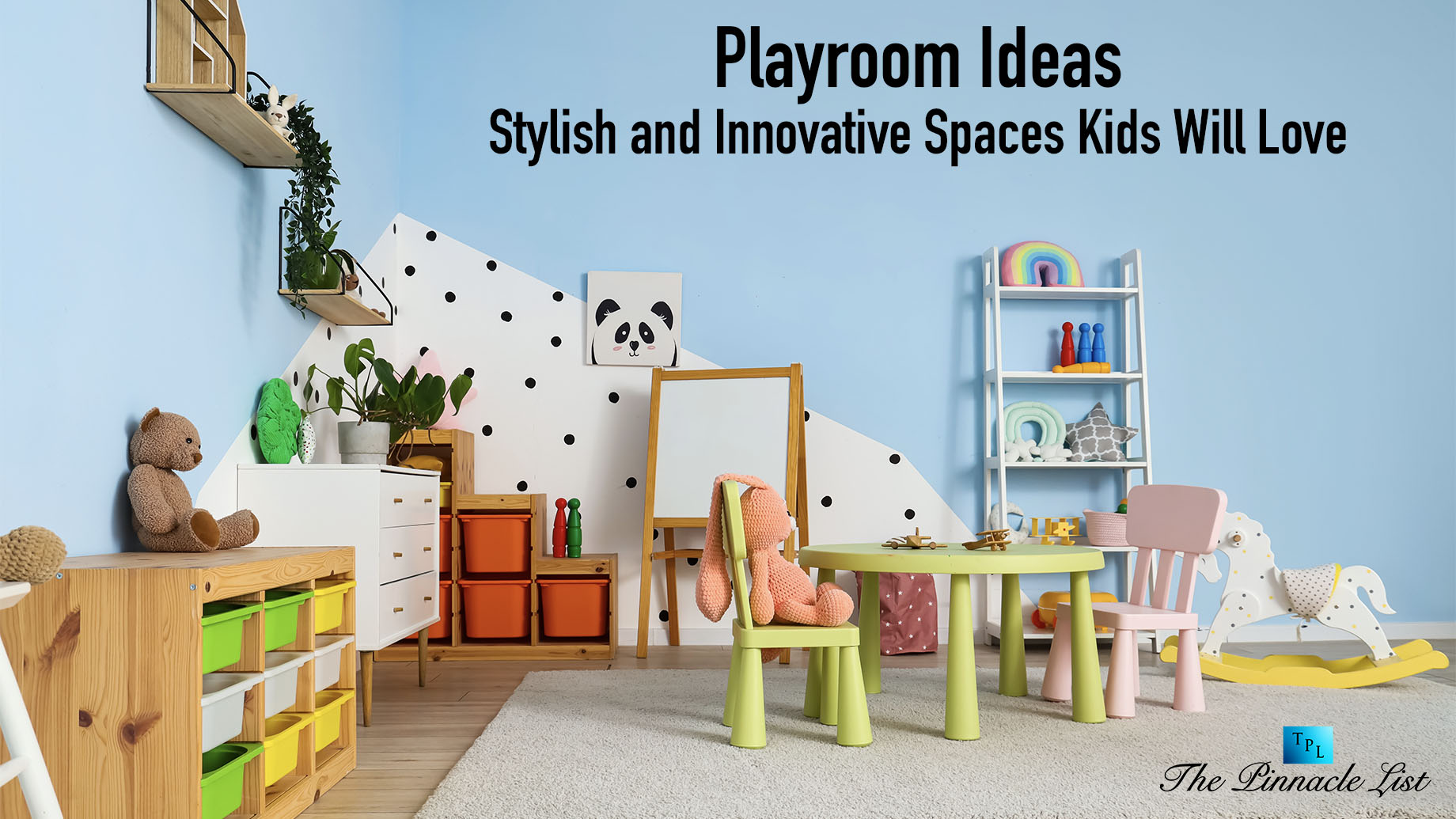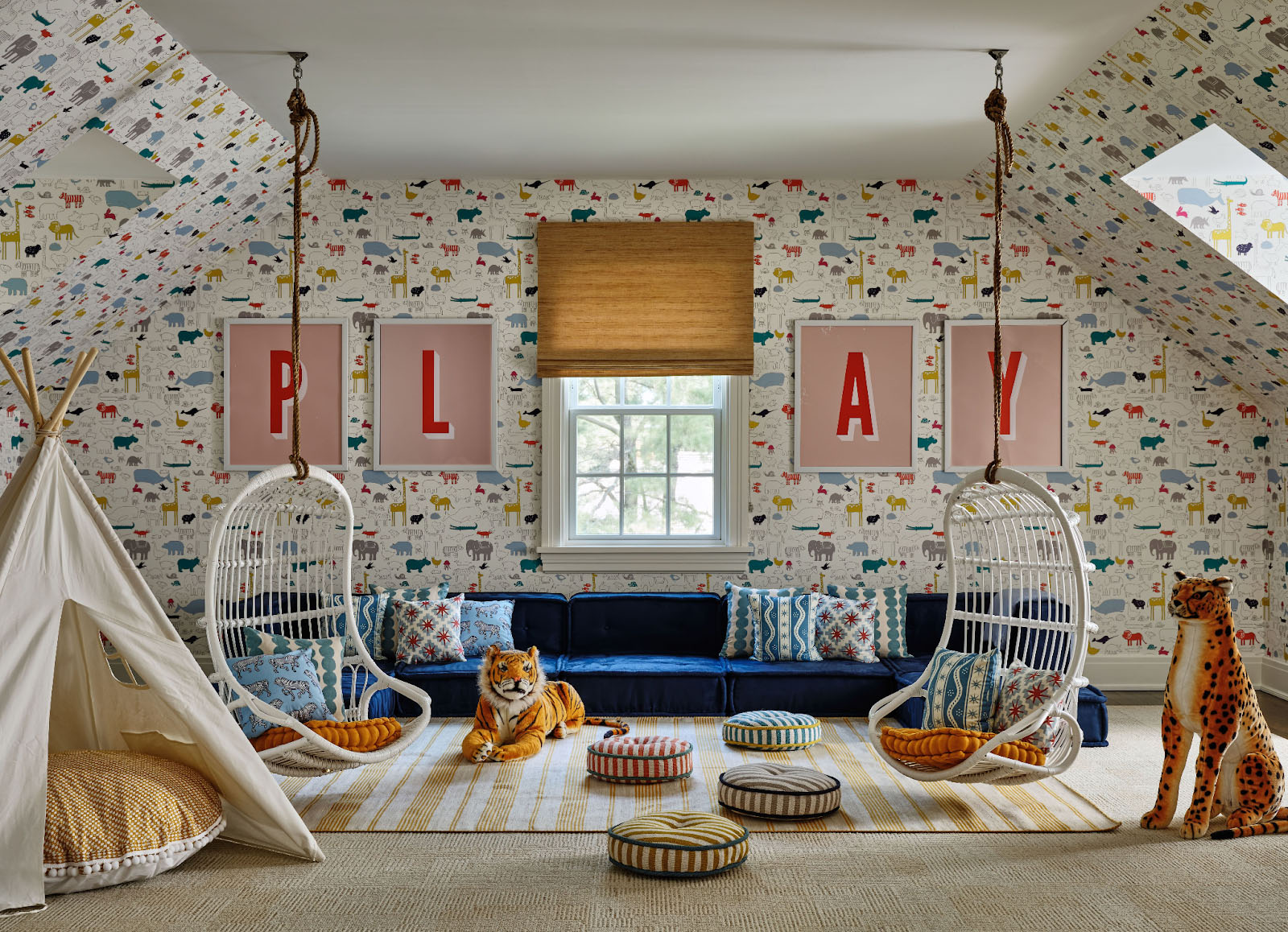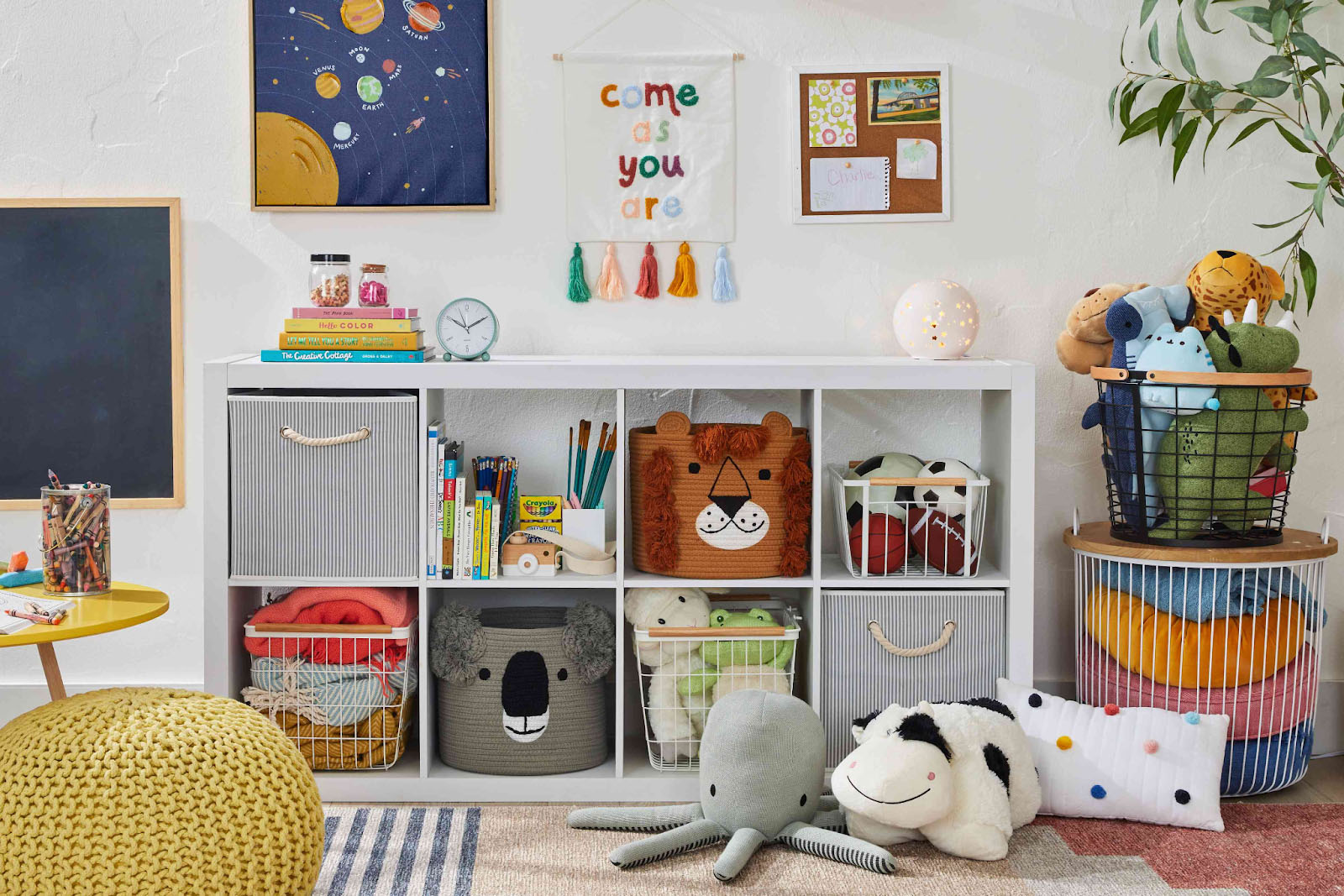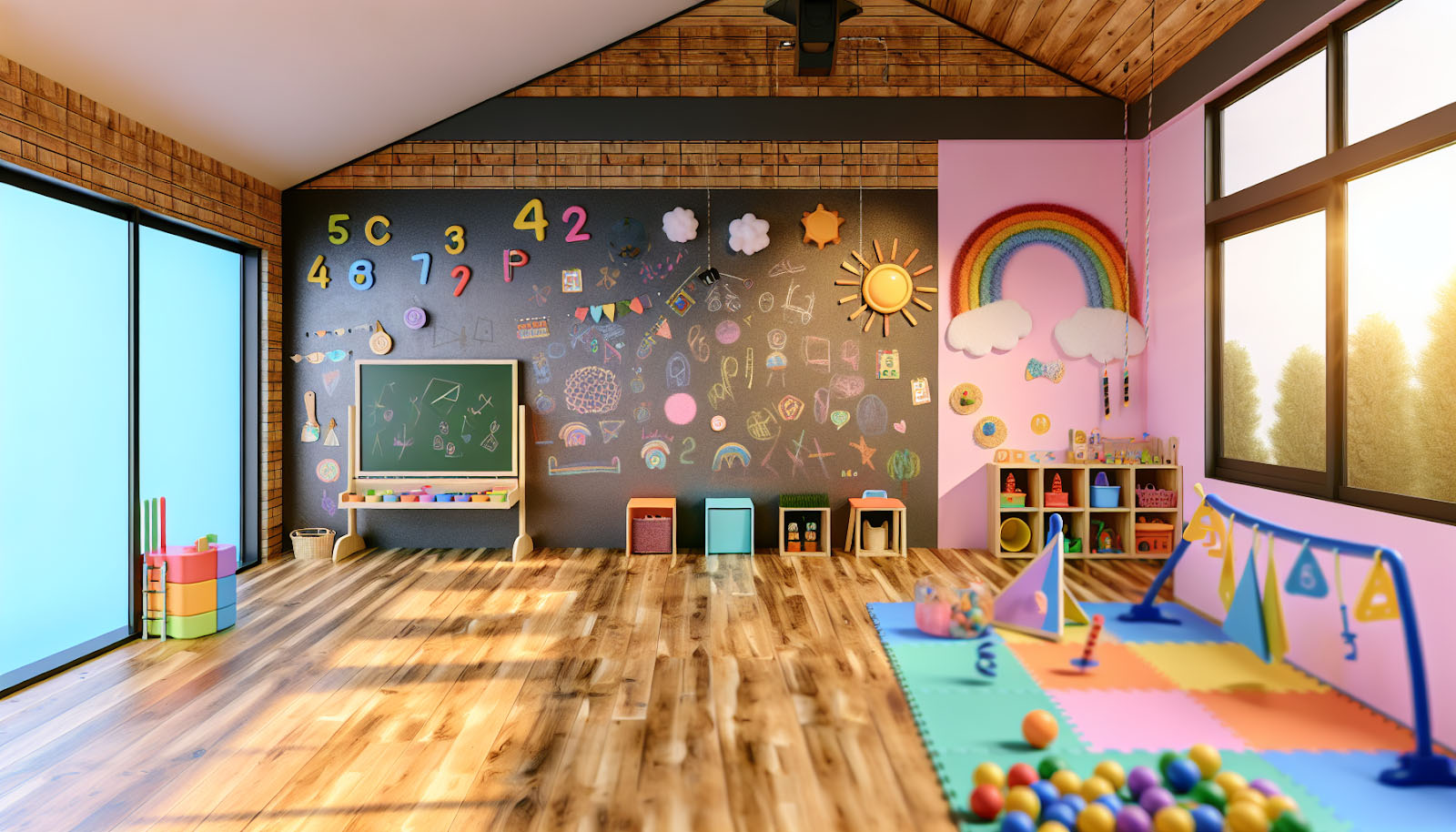
Create a playroom that combines style, safety, and practicality. Explore expert tips on designing a functional, safe, and stylish space that adapts to your child’s evolving needs and interests.

Fundamentals of Designing a Playroom: Where to Start?
Designing a child’s playroom goes beyond arranging furniture; it’s about creating a space that supports their needs and sparks imagination. The first step is defining the room’s primary function—whether it’s for play, reading, or creative development—based on the child’s age and evolving interests.
A key aspect of the design is thematic décor, which sets the mood and fuels creativity. Themes like space, forest adventures, or an art corner can inspire children, providing a rich backdrop for exploration and expression.
Equally important is multifunctional furniture. As children grow and their interests shift, furniture that adapts is essential. Pieces like convertible beds, foldable desks, and movable shelves not only save space but also encourage independence and can be adjusted to suit the child’s changing needs.
By defining the room’s purpose, selecting a theme, and choosing flexible furniture, you can create a space that is both functional and inspiring. Now, let’s dive into key considerations like safety and ergonomics to ensure a comfortable and practical environment.

How to Create Stylish and Functional Décor for a Playroom
Creating a stylish and functional décor for a playroom requires balancing aesthetics with practicality. One of the easiest ways to make the space visually striking is by incorporating bold accents, such as a vibrant mural or a chalkboard wall. These elements not only add character but also encourage creativity, as children can interact with the design and make it their own. Whether it’s a jungle scene, a space-themed wall, or an artistic sketch space, thematic décor creates an immersive atmosphere that sparks imagination.
When choosing furniture, it’s important to combine style with safety. Opt for low shelves and soft ottomans to ensure that children can easily access their toys while keeping the space tidy. Non-slip rugs are a practical choice to prevent slips during active play, while soft play zones (like cushioned mats or beanbags) provide a safe and cozy spot for both play and relaxation. The key is to select pieces that fit seamlessly into the room while being durable and child-friendly.
Equally important is lighting, which plays a vital role in setting the right mood for the playroom. Natural light should be maximized wherever possible, as it helps create a bright, welcoming atmosphere. In addition, ensure safe artificial lighting—warm-toned LED lamps can create a cozy ambiance for evening play sessions or quiet reading moments. A mix of ambient, task, and accent lighting will help highlight various areas of the room while maintaining a comfortable environment for children to explore and unwind.
In the end, by blending vibrant accents, child-safe furniture, and thoughtful lighting, you can design a playroom that is both stylish and highly functional—creating a space where both parents and children feel at home.
Modern Ideas for Playrooms: Innovation and Sustainability
Modern playrooms not only reflect the latest design trends but also integrate innovative technologies and sustainable practices. Incorporating technology has become increasingly popular. For example, interactive toys and projection systems open new horizons for children’s development. Projectors can create magical fairy tale worlds and can also be used for educational purposes, such as projecting maps, letters, or numbers. These technological solutions make the learning process engaging and visual, helping children develop both cognitive and creative skills.
Equally important is ecological responsibility. More and more parents are opting for furniture and toys made from safe and environmentally friendly materials. Bamboo, natural wood, fabrics that are easy to clean, and non-toxic paints are just a few examples of solutions that help create not only a safe but also an eco-conscious environment for children. These materials are not only resistant to dirt but also have a long lifespan, making them economically viable in the long run.
To optimize space and minimize clutter, vertical storage solutions are actively used. Pegboards, shelves, and hanging systems not only help store toys, books, and accessories but can also be part of the décor, giving the room a modern look. This approach to space organization helps maintain order, freeing up space for play and activity while not overcrowding the room with unnecessary items. Vertical storage systems provide easy access to belongings and allow for a more organized use of room space, creating a more open and tidy environment.
As technology continues to play a growing role in children’s environments, even within their playrooms, one could draw a parallel with immersive experiences found in gaming. Just as a child might enjoy interactive learning through projectors, Path of Exile 2 offers an engaging, immersive world for gamers, where leveling up is a key aspect of the experience. For those looking to accelerate their journey through this vast universe, a PoE 2 Leveling boost can be an excellent option. It allows players to progress faster and unlock content more efficiently.
Thus, modern playrooms offer the perfect combination of technology, ecology, and innovative approaches to space organization. This helps create not only stylish and comfortable but also safe and sustainable play areas that will delight both children and their parents, while gaming experiences like PoE 2 continue to evolve as well, offering a unique blend of innovation and entertainment.

Safety in the Playroom: How to Combine Style and Safety
Creating a safe playroom for children is a primary task for parents, and it shouldn’t interfere with design or aesthetics. It is important for the space to not only be stylish but also protect against potential risks. One of the first steps in ensuring safety is choosing safe, non-toxic materials. Furniture, toys, textiles, and coverings should be made from materials that are free from harmful substances such as phthalates, lead, or formaldehyde. Furniture with smooth, rounded edges and soft wall and floor coverings help prevent injuries from accidental falls.
When organizing the space to minimize injury risks, it’s essential to focus on soft surfaces such as rugs with anti-slip layers or rubber inserts that provide additional cushioning when falling. It’s also important to secure furniture, especially large items like bookshelves or cabinets. They should be anchored to the wall to prevent tipping, which could lead to injury. Furniture that can easily be tipped over should be replaced with more stable and safe alternatives to avoid potential risks.
Another key aspect of safety in the playroom is proper cord management and equipment placement. Cords should be hidden in protective channels or boxes to prevent children from accidentally reaching them. This also helps avoid the danger of short circuits or burns. Mobile devices and equipment, such as televisions or projectors, should be mounted at a safe height and on stable surfaces. If the room uses a lighting system, choose light fixtures with overheating protection, and use outlet covers to prevent accidental electric shocks.
Combining style and safety in a playroom is possible by carefully considering all the elements of the interior and carefully selecting materials and furniture. This approach will create a space that is not only appealing but also safe for children, providing comfort and peace of mind for parents.
How to Create a Durable and Comfortable Playroom
Creating a durable and comfortable playroom requires attention to space organization and maintaining order. It’s important to consider several key aspects that will not only make the room functional but also encourage the child’s sense of responsibility.
Storage Organization System:
- Use boxes, containers, and baskets of various sizes for efficient toy storage.
- Clear containers help children easily find what they need and teach them to be organized.
- Organize toys into categories (building sets, role-play toys, art supplies) to make it easier for children to maintain order.
Periodic Toy Rotation:
- Regularly rotate toys to maintain the child’s interest and variety in their activities.
- Toy rotation helps prevent boredom and keeps the element of novelty alive.
- Old toys can be put away for a while, making them more attractive when they return.
Involving the Child in Cleaning and Organization:
- Involve the child in the process of cleaning and organizing the space, teaching them responsibility and order.
- Break cleaning tasks into simple steps, such as returning toys to their places or sorting items by category.
- As the child grows, they will gradually learn to manage their own belongings independently, developing a sense of responsibility and pride in keeping things tidy.
Conclusion
A well-organized playroom is not only a convenient space for play but also a way to nurture a child’s responsibility. Maintaining order, periodically updating toys, and involving the child in organizing the space will help create a durable and functional playroom.